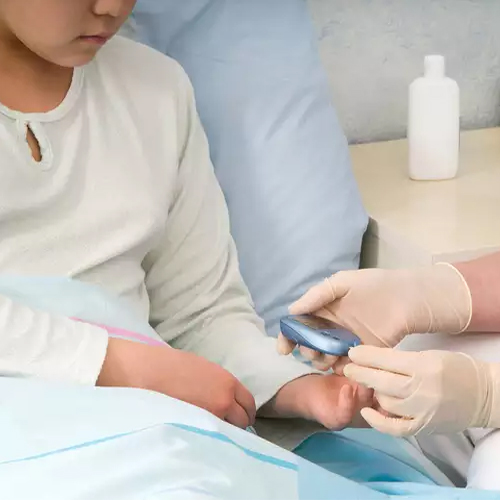Care of Children and Adolescents with Type 1 Diabetes
Type 1 diabetes usually begins in childhood or young adulthood. Depending on their age and level of maturity, children/adolescents should be encouraged to take care of themselves
Diabetes education is mandatory in the management of type 1 diabetes in children/ adolescents
Type 1 diabetes is a chronic medical condition that occurs when the pancreas, an organ in the abdomen, produces very little or no insulin. Type 1 diabetes usually begins in childhood or young adulthood, but can develop at any age. The number of people with Type 1 diabetes is on the rise, doubling almost each decade. Type 1 diabetes requires regular blood sugar monitoring and treatment with insulin. Insulin is vital for the survival of people with Type 1 diabetes. Treatment, lifestyle adjustments, and self-care can control blood sugar levels and minimize the risk of disease-related complications.

Infants and Toddlers (less than 3 years)
Infants and toddlers present unique challenges for the treatment of Type 1 diabetes. The tremendous responsibility of care and fear of hypoglycemia are extremely stressful for families as infants do not exhibit the classic symptoms of hypoglycemia and are unable to communicate sensations associated with hypoglycemia. Thus the risk of severe hypoglycemia, with seizures or coma, is highest in this age group. Among toddlers, hypoglycemia is a constant fear, especially when the child refuses to eat. Thus, parents of infants/toddlers need the support of a diabetes team that understands the difficulties of dealing with them and is able to provide emotional support to manage their concerns.
Preschoolers (3–6 years)
Most children in this age-group can participate in their self-management by testing blood glucose, helping to keep records, and in some cases counting carbohydrates. For this group, parents provide the care for preschoolers, but others, such as child care providers may also be involved in the care. Undetected hypoglycemia remains a concern because of the variations in activity and food intake characteristic of this age-group, and because of continuing concerns regarding the adverse effects of hypoglycemia on brain development and function.
School-aged children (7–11 years)
In this age group, immediately following diagnosis, children report mild depression and anxiety, but these usually resolve by 6 months after diagnosis. This is because children may feel that they are different from their peers due to their diabetes. After the first 1–2 years, depressive symptoms increase, and anxiety decreases for boys but increases for girls over the first 6 years after diagnosis. Children with diabetes can take care of their daily diabetes management tasks, such as insulin injections and blood glucose testing with supervision and support from caring and knowledgeable parents. It is important to encourage school-aged children to attend school regularly and to participate in school activities and sports to facilitate the development of normal peer relationships.
Both children and parents fear hypoglycemia and the potential for hypoglycemia to interfere with learning. Most school-age children can recognize symptoms of hypoglycemia and if they are over 12 years old they may be able to take insulin injections of correct dosage by themselves. Children can also be involved in planning their diet chart.
Adolescents
Adolescence is a period of rapid biological change accompanied by increasing physical, cognitive, and emotional maturity. Many of the diabetes-related activities can interfere with the adolescent’s drive for independence and peer acceptance. Adolescents can perform the tasks of diabetes management, however, they still need help with decision-making about insulin adjustments. Thus, continuing to involve parents appropriately, with shared management, is associated with improved control. During the later adolescent years, the parents and the diabetes care team need to assist them to transition to more independent self-management and to adult diabetes care providers.
